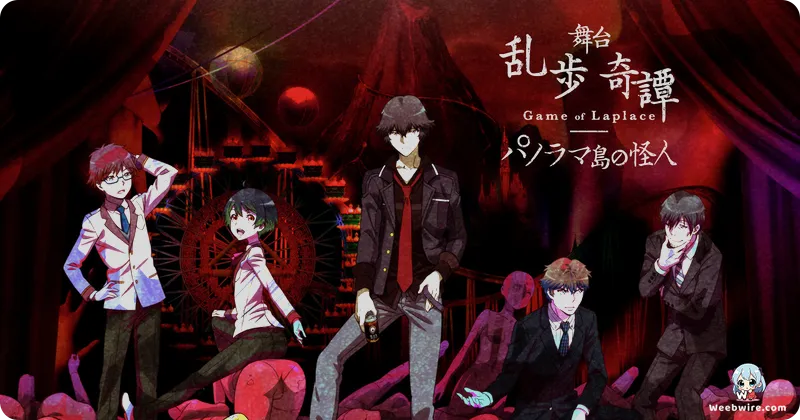Decoding Edogawa Ranpo: How 'Game of Laplace' Used Literary Homage and Faceless Crowds to Master the Psychological Thriller

Unveiled in 2015 by Studio Lerche, Rampo Kitan: Game of Laplace transcends typical mystery anime, establishing itself as a sophisticated psychological thriller deeply rooted in literary history. This critically acclaimed series is far more than just a modern high school detective story; it functions as a deliberate, detailed tribute to the legacy of Edogawa Ranpo, the revered progenitor of Japanese mystery fiction. Crucially, the show was commissioned to commemorate the 50th anniversary of Ranpo’s death, a fact that underpins the entire narrative structure and thematic depth.
Honoring the Father of Japanese Mystery
Ranpo, whose pen name is a subtle phonetic nod to Edgar Allan Poe, laid the foundation for the genre in Japan. Game of Laplace masterfully translates his early 20th-century psychological landscapes into a high-tech contemporary setting. Central to this adaptation are the key figures, Akechi and Kobayashi. Akechi is an updated interpretation of Ranpo’s most iconic creation, Detective Kogoro Akechi, Japan's equivalent to Sherlock Holmes, maintaining his signature brilliance and eccentric demeanor while tackling modern alienation and digital crimes.
Meanwhile, the enigmatic protagonist, Kobayashi, echoes the youthful assistants often seen in Ranpo's famous Boy Detectives Club stories, forming a classic dynamic with the genius investigator.
Visual Commentary on Modern Alienation
Director Seiji Kishi (known for Assassination Classroom and Angel Beats!) implemented one of the series' most memorable artistic choices: rendering all non-essential background characters as faceless, silhouetted mannequins. This striking visual technique is not an animation shortcut, but a profound psychological statement. It visually captures the profound detachment, loneliness, and existential dread experienced by the main cast, particularly Kobayashi, who finds life meaningless until confronted by murder.

The anonymous crowd symbolizes how easily individuals can become lost or overlooked in modern society, intensifying the viewer’s focus on the intricate emotional struggles of the central figures.
Meticulous Literary Connections
This deep connection to the source material is meticulously woven into the plot. The opening arc, featuring a gruesome classroom murder, directly modernizes Ranpo’s chilling short story, "The Human Chair" (Ningen Isu), exploring themes of voyeurism and hidden identity. Subsequent episodes draw heavily from other classics, including the challenge posed by "The Fiend with Twenty Faces."
Furthermore, the deliberate gender ambiguity surrounding Kobayashi, who is confirmed male but often mistaken for a girl and wears feminine clothes, is a faithful homage to Ranpo's frequent exploration of duality, disguise, and fluid identity within his crime narratives. Visually, Lerche utilized a distinctive neo-noir color palette of deep reds, blues, and blacks. This stylistic choice elevates Rampo Kitan beyond a simple procedural into a commentary on the darker facets of human nature, successfully honoring Ranpo’s legacy of exploring the beautiful and the grotesque in the human psyche.
Credits
Rampo Kitan: Game of Laplace
Author
Makoto Uezu (Series Composition), Inspired by Edogawa Ranpo
Cover Art
Tomomi Ozaki
Studio
Lerche
Publisher
Fuji TV (Noitamina)
Producers





